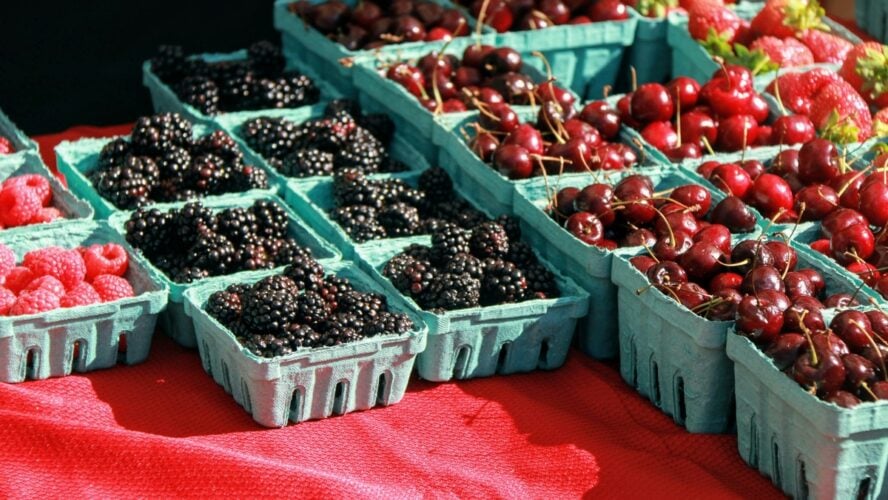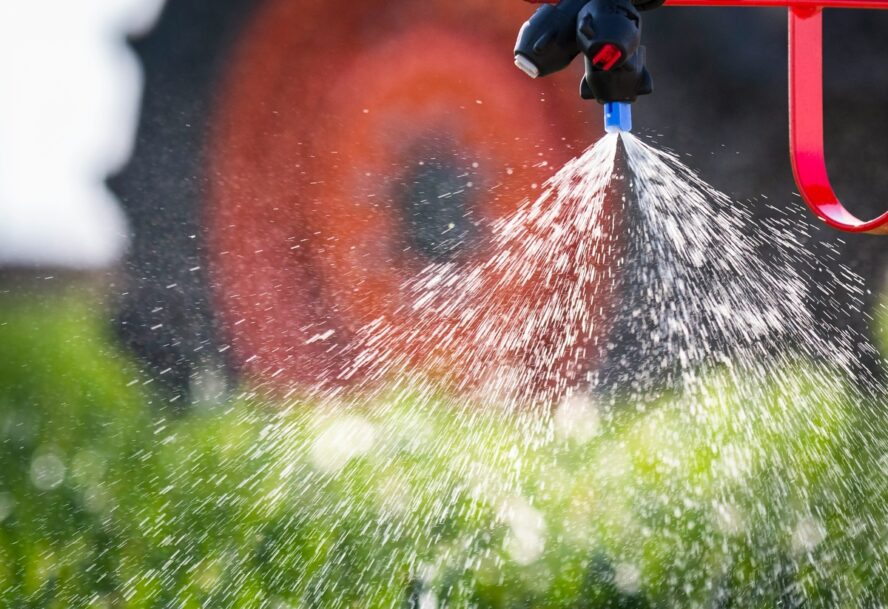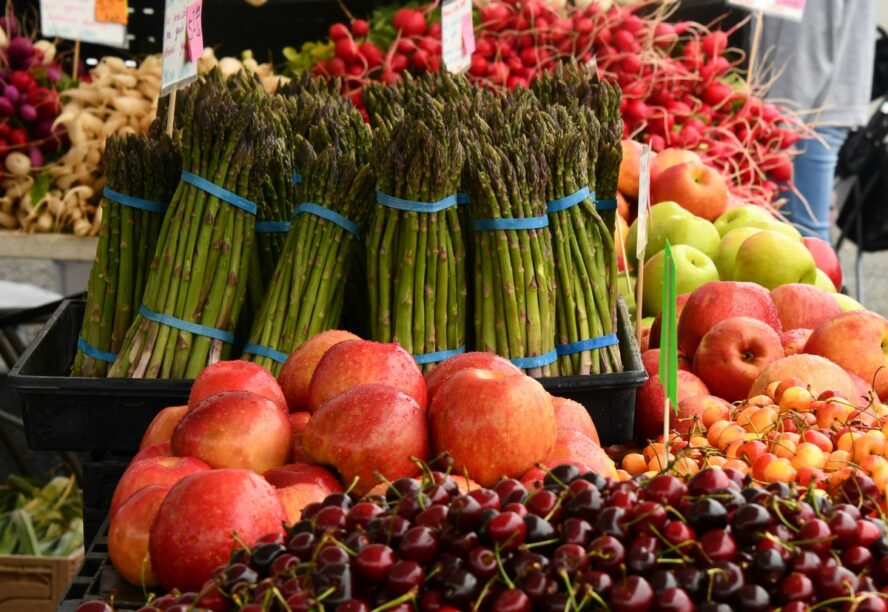
It’s more important than ever to purchase organic blackberries and sweet potatoes, according to new data aggregated by the Environmental Working Group. These two common produce items join ten others on the EWG’s Dirty Dozen list of 2025.
What Are the Clean 15 and Dirty Dozen?
Over three-quarters of conventional produce in the U.S. contains residues of potentially harmful pesticides, including carcinogenic and neurotoxic substances. Every year since 1999, EWG has taken advantage of Department of Agriculture data on more than 53,000 samples of 47 fruits and vegetables to publish its Dirty Dozen list.

The Dirty Dozen features the 12 items with the most traces of pesticides on the American market. More than 90% of samples of conventional produce on this year’s Dirty Dozen contained pesticide residue. The group concurrently publishes a Clean Fifteen, a list of 15 conventional or non-organic produce items least likely to contain deadly pesticides. Together, these lists make up the EWG’s Shopper’s Guide.
“EWG’s Shopper’s Guide is a tool to inform consumers and help them with their produce shopping choices, with the goal of everyone eating more fruits and vegetables,” said EWG Vice President for Science Alexis Temkin, Ph.D. “For people looking to reduce pesticide exposure, buying from the Clean Fifteen is a great place to start.”
A New Methodology for More Clarity
This year, the EWG updated its methodology: The list now reflects not just the frequency and concentrations of pesticides, but also their toxicity.
“By incorporating pesticide toxicity into our rankings, we give shoppers a more complete picture of what’s on their produce,” said Varun Subramaniam, M.S., EWG associate scientist. “This means we’re not only flagging produce with the most pesticides, we’re also highlighting those with potential health hazards.”
Two Dirty Dozen Newcomers

Two items — blackberries and potatoes — join this year’s Dirty Dozen for the first time, but it’s not necessarily due to a sudden uptick in pesticide use. The USDA first tested blackberries in 2023, and this is the first year that data for this antioxidant-rich berry has been available.
Tests showed that a whopping 93% of blackberry samples had pesticide residue. These included cypermethrin1, which has been identified as a possible human carcinogen by the EPA and has been shown to disrupt thyroid hormones2. It was detected on over half of blackberries tested. If you’re thinking of making a gorgeous blackberry crisp or a golden beet salad with blackberries, consider investing in organic to try to minimize your consumption of foods with pesticides.
Sweet potatoes also joined the list due to new data from the USDA, which showed that 90% of samples tested positive for chlorpropham, a sprout inhibitor used post-harvest. Chlorpropham has been linked with vascular irregularities and general developmental toxicity3; it has been banned in the European Union since 2019.
Other Produce Items on the Dirty Dozen List

Apples may not keep the doctor away if they’re conventionally farmed: 60 percent of apples were found to be contaminated with diphenylamine, a chemical used to prevent their skins from developing dark patches in cold storage. Some evidence shows that this substance could be carcinogenic4.
Some of the worst offenders on the Dirty Dozen list were leafy greens like kale, collard, and mustard greens. But of all the leafy greens, spinach was the dirtiest, with more pesticide residues by weight than any other type of produce.
One of these pesticides is permethrin, a neurotoxic insecticide that has been banned in Europe since 2000. At high doses, permethrin has been found to overwhelm the nervous system and cause tremors and seizures5. But even small amounts of permethrin could lead to neurological disorders. In one 2015 study in Environmental Health, children with permethrin residues in their urine were twice as likely to be diagnosed with ADHD6.
The Dirty Dozen list is rounded out with potatoes, pears, nectarines, cherries, peaches, grapes, and strawberries.
The Safest Produce to Consume
So, is organic really better? EWG’s Dirty Dozen is proof that there are clear concerns associated with some conventional produce. And the benefits of organic produce include don’t stop at lowered pesticide exposure. Studies have shown that eating organic produce may lead to better cognitive function7, reduced cancer risk8, and higher intake of essential vitamins and minerals like iron, magnesium, and vitamin C.
However, we understand that there are many factors that may make conventional a better option for you, including price and availability. If you’re buying conventional produce, the Clean Fifteen is the way to go. EWG’s Clean 15 is a list of products that have significantly lower overall toxicity than items on the Dirty Dozen list, even when farmed conventionally.
Newcomers to the EWG’s Clean 15 include bananas and cauliflower. These items join frequent fliers like sweet corn, avocados, papaya, onion, frozen peas, asparagus, cabbage, watermelon, mangoes, carrots, mushrooms, kiwi and pineapple. If you’re worried about toxicity but are shopping for conventionally farmed produce, sticking to this EWG list is a great place to start.
Sources:
- https://www.sciencedirect.com/science/article/abs/pii/S0304383502000770
- https://pubmed.ncbi.nlm.nih.gov/40381747/
- https://pubmed.ncbi.nlm.nih.gov/32450337/
- https://www.ncbi.nlm.nih.gov/books/NBK595851/table/T003.001___2/?report=objectonly
- https://pmc.ncbi.nlm.nih.gov/articles/PMC5598406/
- https://pmc.ncbi.nlm.nih.gov/articles/PMC4458051/
- https://www.psypost.org/study-links-organic-food-consumption-to-better-cognitive-function-in-older-adults/
- https://pmc.ncbi.nlm.nih.gov/articles/PMC10814746/

